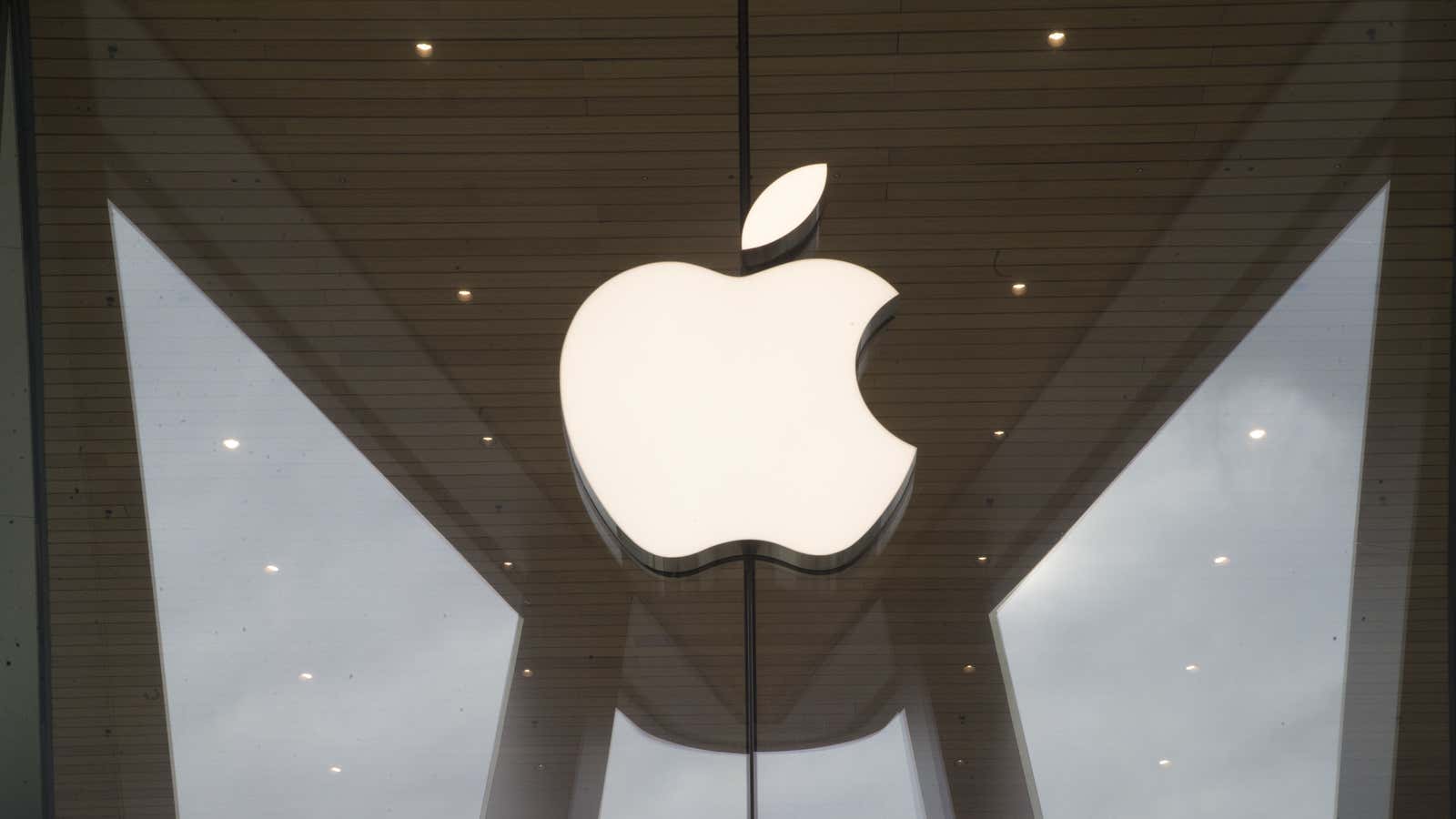Apple’s latest iPhones, including the excellent (but terribly named) iPhone 11 Pro Max, were released during the company’s fiscal fourth quarter, the results of which the company will be reporting later today (Oct. 30). But iPhone sales won’t necessarily be the number investors will be concerning themselves with.
The iPhone has long been Apple’s cash cow, at times accounting for nearly 70% of the company’s revenue in a given quarter. But in recent years, the sheen of Apple’s once-revolutionary product has started to fade. There are now great devices from competitors, many costing less than an iPhone, and Apple is usually late to adopt new features, like wireless charging, often deliberately. As a result, Apple has started to push into new initiatives, such as launching a streaming TV service full of original shows, and more accessory products, like the new AirPods Pro or the latest Apple Watch.
The new iPhones were only on sale for a short time in the just-completed quarter, so will be far more important to next quarter’s numbers, the first of its fiscal year. Investors will be looking to see Apple’s guidance for the quarter, which includes the holidays when it traditionally sells more than any other period. Last year during its fourth quarter, the company missed its own sales guidance for the first time in over a decade, but still managed to post $84 billion in revenue. That’ll be the number investors are hoping Apple says it can beat for its holiday quarter, and will signal whether the new iPhones have helped curtail the downward revenue trend the product has seen recently.
But more immediately, in this quarter’s results, investors will be looking to see whether Apple’s non-iPhone revenue was able to pick up the slack from flagging iPhone sales. The iPhone will still likely sell well— in the third quarter, it generated nearly $26 billion in revenue, more than double any other single business line for the company—but it seems probable that the revenue for this quarter will trail that of the same period last year, as it did in the third quarter. The company’s services business—including sales of games, apps, music, subscriptions, and Apple Pay fees—has been soaring in recent years, and is now Apple’s second-largest business by far. It generated roughly $11.5 billion in both of the last two quarters, and investors will be looking to see whether that trend will continue.
Beyond services, there will be increased scrutiny over how the company’s other hardware businesses have fared, whether kids picked up new MacBooks and iPads during the back-to-school season, and whether the cultural phenomenon that AirPods have become continues to roll on. Investors will also likely be interested in whether Apple has managed to make any headway in growth markets that it’s recently been struggling to crack, such as China and India. But that seems unlikely—at least for now.
